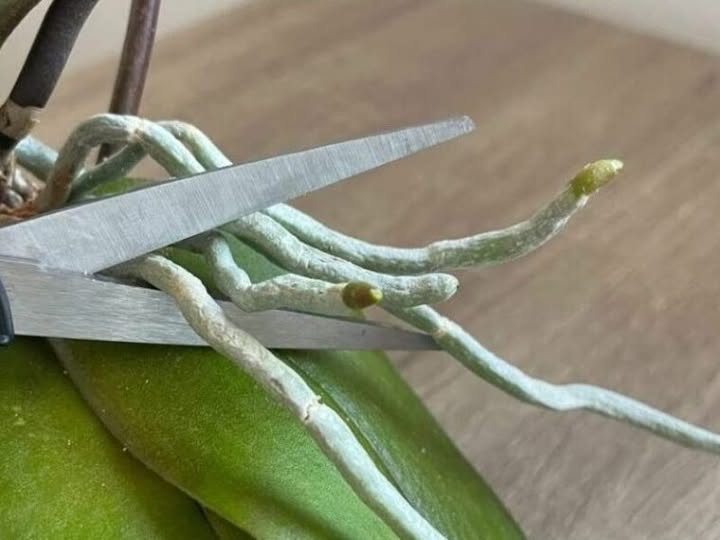Check for pests like aphids, mealybugs, or spider mites, which can harm your orchid. Look under the leaves and around the roots. If you find pests, remove them gently and treat the plant with an insecticidal soap.
9. Old or Infected Roots
Orchids have delicate roots that can easily become infected or damaged. Check the roots regularly, and if they look shriveled, brown, or mushy, trim them off. Healthy roots should be white or green.
10. Potting Too Tight or Too Loose
Orchids do not like to be in pots that are too small, as their roots need space to grow. On the other hand, a pot that’s too big can lead to root rot because the excess soil retains too much water. Repot the orchid every 1-2 years into a slightly larger pot when necessary.
11. Flower Spike Issues
Sometimes, orchids may fail to bloom due to stress, poor care, or old age. If the flower spike turns yellow or brown, it may be dying off naturally. However, with the right care, it may bloom again in the future.
By addressing these issues, you can improve your orchid’s chances of recovery and enjoy its beautiful blooms again. Regularly check the condition of the plant and adapt your care routine as needed.



Yo Make również polubił
Baby Lemon Impossible Pies: Silky, Citrusy Delights
TAGINE Z KLOPSIKAMI, ZIEMNIAKAMI I OLIWKAMI
Tremendous Cajun Salmon and Shrimp Feast
Kwas cytrynowy: 8 rewolucyjnych zastosowań w codziennym życiu